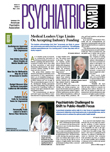A federal watchdog agency has found evidence that only a small fraction of new child beneficiaries in the joint federally and state-funded State Children's Health Insurance Program (SCHIP) already had access to private insurance. However, too few states have tracked this effect to provide a comprehensive nationwide perspective of the extent of so-called “crowd out.”
Some members of Congress, mainly those opposed to expansion of government-funded health care, worry that as more people become eligible for such care, the more private insurance will be shunned. A report by the Government Accountability Office (GAO) released in April found, however, that no state considers crowd out of private insurance by SCHIP to be a problem.
The GAO report was requested by Sen. Max Baucus (D-Mont.), chair of the Senate Committee on Finance and a leader of the health care reform effort. He had asked for an examination of federal and state efforts to minimize crowd out and how they assessed whether crowd out is occurring. His office said he had no official comment on the report, although he would address the issue as the health care reform debate advances.
The GAO review was based on annual reports of state SCHIP agencies submitted to the Centers for Medicare and Medicaid Services (CMS) for 2007.
Six of the states that reported crowd-out statistics—and only a minority of states reported these data—said it occurred in less than 1 percent of their SCHIP beneficiaries.
The report followed a 2007 CMS study of SCHIP that found the magnitude of the occurrence of crowd out among new beneficiaries ranged widely—from 0.7 percent to 56 percent—depending on how crowd out was defined and measured.
A federal mandate that states take steps to reduce crowd out, should it occur, resulted in 39 states requiring a period of uninsurance before an applicant could enroll in SCHIP, among other steps.
The GAO recommended that CMS require states to collect previous insurance information from SCHIP applicants and assess the availability of private health coverage for these families.
The practicality of implementing the GAO's suggestions was questioned by Charlene Frizzera, acting administrator of CMS, because the issue of crowd out is complicated, and attempts to measure it are plagued by variations in definition and methodological approaches.
The issue of private-insurance crowd out was repeatedly raised by critics of a large expansion of SCHIP approved by Congress in February. President Barack Obama signed a nearly $33 billion expansion of the program (PL-111-3) that increased the number of children eligible for SCHIP from 7 million to 11 million beginning in April. Critics cited controversial estimates that suggested that as many as 2.4 million of the new beneficiaries would come from private insurance.
During the debate on broadening SCHIP eligibility, Baucus said that rather than worrying about more children moving into a public health plan, Republicans, who largely opposed SCHIP expansion, should focus on reforming private health insurance to ensure that affordable options are available for working-class families.
Crowd-out concerns are, however, not limited to opponents of SCHIP expansion. These same critics worry that a similar movement could transfer to overall health care reform efforts, which aim to cover all 47 million uninsured Americans. Baucus offered a reform outline that would, for example, expand Medicare and Medicaid, a move that critics insisted would further crowd out private-coverage options in favor of taxpayer-financed ones. Another reform option advocated by some Democrats is the creation of a new federal insurance alternative to compete with private insurance plans.
This latter approach has drawn some of the fiercest opposition over crowd-out concerns.
The insurance industry offered a plan in March intended to stave off efforts by congressional Democrats to create a new public health insurance option. In exchange for members of Congress dropping the national insurance option, insurers said that if all Americans were required to carry insurance, they would end the practice of charging higher premiums to applicants with preexisting conditions.
The GAO report “CMS Should Improve Efforts to Assess Whether SCHIP Is Substituting for Private Insurance” is posted at<www.gao.gov/new.items/d09252.pdf>.▪
